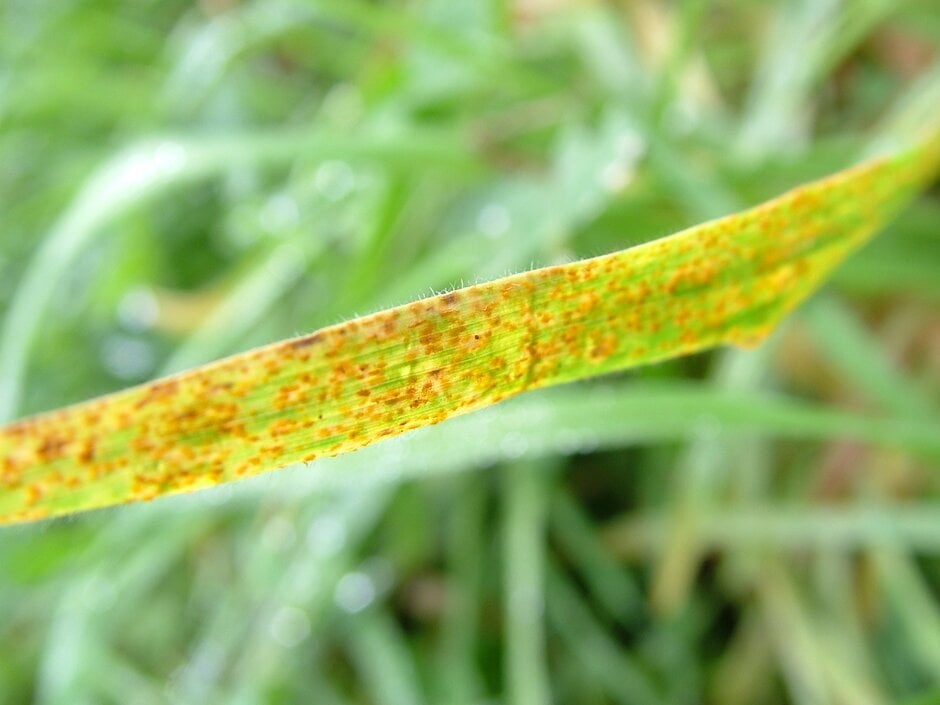Lawn: rust disease
Like many other plants, lawn grasses can suffer from rust diseases, which cause the leaves to look yellow and unsightly. Rust usually develops in late summer or autumn.

Quick facts
Scientific name Various
Plants affected Lawn grasses
Main causes Fungus
Timing Summer to autumn, particularly when wet
What is lawn rust disease?
Rust is a common foliar disease of turf. It is caused by various fungi, usually Puccinia or Uromyces species. Infected areas may produce huge numbers of air-borne spores.
Symptoms
Typical symptoms of lawn rust include;
- Affected patches of grass turn yellow
- Large numbers of tiny, spore-producing pustules break through the leaf surface. The colour of the pustule will depend on the species of rust and the type of spore it is producing. Most commonly the pustules are orange, but in autumn the fungus may switch to producing black pustules containing over-wintering spores
- When walking over an affected lawn, footwear or clothes may be stained orange as they become coated with vast numbers of spores
- Severely affected leaves may turn brown and shrivel, but the rust does not usually kill the grass
Control
Non-chemical control:
- Feed the lawn regularly during the growing season to maintain vigour
- Avoid high nitrogen fertilisers in the autumn, as the resultant lush growth may be more prone to attack by rust and other diseases such as Fusarium patch
- Mow regularly to reduce the number of affected leaves, removing the clippings
- Improve air circulation by selective pruning of overhanging trees and shrubs
Chemical control:
There are no fungicides available to gardeners with recommendations for the control of diseases on lawns. Chemical control of rust is usually unnecessary, however, as the symptoms are temporary. Even lawns that are heavily infected in autumn will usually produce healthy growth by early summer of the following year.
Biology
The orange pustules produce summer spores that can be carried for long distances on the wind. They need several hours of surface wetness in order to germinate and infect the leaf. Rust is therefore most prominent in wet summers, and particularly in autumn when heavy dews provide extended periods of leaf wetness. The black pustules produce over-wintering spores that are adapted to survival in cold conditions.
Lawns lacking in vigour (due to factors such as nutrient deficiency or drought stress) are often more prone to attack. Rust is often very noticeable on long grass or where trees or shrubs overhang the lawn. In these situations the grass is slower to dry out after rainfall or dew.
Get involved
The Royal Horticultural Society is the UK’s leading gardening charity. We aim to enrich everyone’s life through plants, and make the UK a greener and more beautiful place.